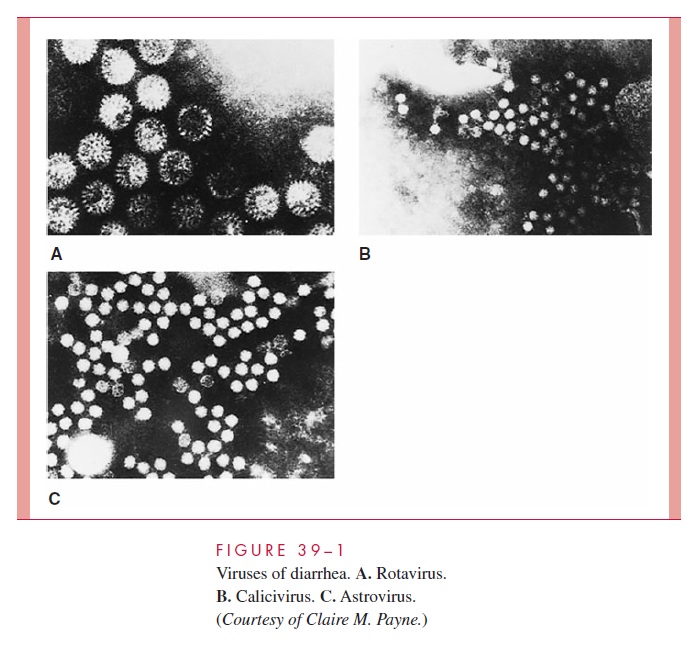Chapter: Medical Microbiology: An Introduction to Infectious Diseases: Viruses of Diarrhea
Rotaviruses - Virology
ROTAVIRUSES
The human intestinal rotaviruses were first found in 1973 by electron microscopic examination of duodenal biopsy specimens from infants with diarrhea. Since then, they have been found worldwide and are believed to account for 40 to 60% of cases of acute gastroenteritis occurring during the cooler months in infants and children less than
VIROLOGY
The rotaviruses belong to the family Reoviridae. They are naked, spherical particles 65 to 75 nm in diameter (smaller forms have also been described) with a genome containing 11 segments of double-stranded RNA and a double-shelled outer capsid; two segments encode proteins of the outer capsid (VP4 and VP7), which are targets for neutralizing anti-bodies. The name is derived from the Latinrota (“wheel”) because of the outer capsid, which resembles a wheel attached by short spokes to the inner capsid and core (Fig 39–1). Three serogroups have been associated with disease in humans (groups A, B, and C). Four group A serotypes (1, 2, 3, and 4), based on VP7 type-specific antigens on the outer capsid, are of major epidemiologic importance. Rotaviruses can replicate in the cytoplasm of infected cell cultures in the laboratory but are difficult to propagate because the replicative cycle is usually incomplete, and mature, infectious virions are often not produced. However, successful propagation of human strains in vitro has been achieved in some instances.

Rotaviruses of animal origin are also highly prevalent and produce acute gastrointesti-nal disease in a variety of species. Very young animals, such as calves, suckling mice, piglets, and foals, are particularly susceptible. The animal rotaviruses can often replicate in cell cultures, and infection across species lines has been accomplished experimentally; however, there is no evidence that such interspecies spread occurs in nature (eg, animal rotaviruses are not known to affect humans and vice versa).
One unique feature of rotaviruses is the ease with which the 11 RNA segments can undergo reassortment. This has enabled the development of live vaccines that combine genes from readily cultivated animal rotaviruses with human rotavirus genes that encode serotype-specific capsid proteins. For example, a current vaccine combines 10 RNA segments from a naturally attenuated rhesus monkey serotype 3 rotavirus with one hu-man rotavirus genomic segment that encodes serotype 1, 2, and 4 VP7 neutralization specificities.
Related Topics